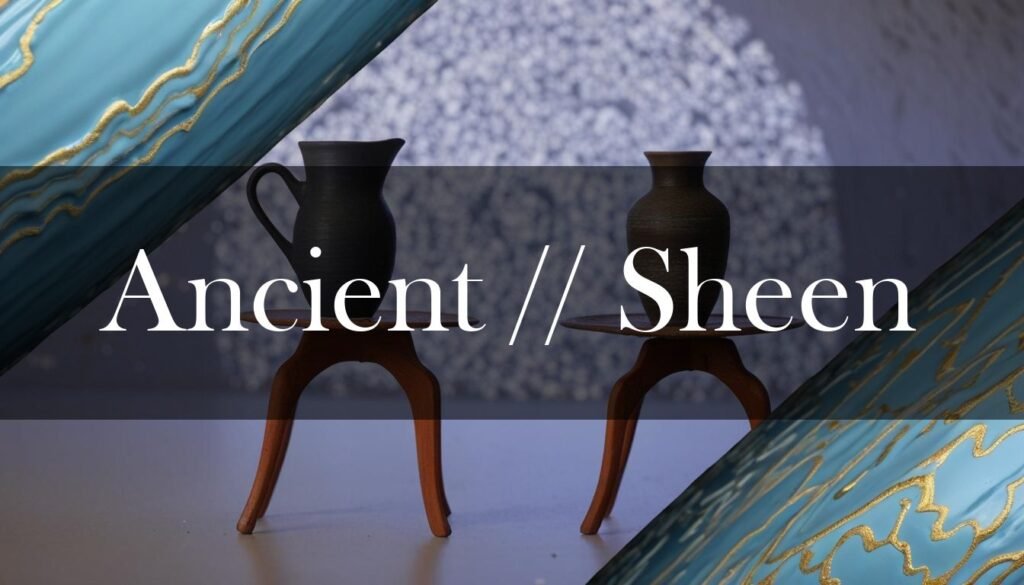Terra sigillata, oh, it’s like the secret whisper of ancient potters, isn’t it? That delicate slip that transforms humble clay into something almost jewel-like. At its heart, terra sigillata is about purity—the finest clay particles suspended in water, coaxed into a shimmering surface. But there’s a bit more to it than just that. Learn more about terra sigillata here.
While the basic recipe sounds simple, achieving that coveted sheen often involves a little alchemy. Many potters add small amounts of additives to enhance the slip’s properties. For example, Kari Radasch’s OM 4 Base Terra Sigillata recipe includes OM 4 Ball Clay, water, sodium silicate, and even touches of Mason stains and Amaco Bright Red Underglaze for color. Alan Willoughby’s Base Terra Sigillata recipe uses OM 4 Ball Clay, sodium hexametaphosphate, and water.
These additions can influence everything from the slip’s workability to its final color after firing.
Historically, the composition was even more intriguing. Ancient recipes sometimes called for mixing the clay with goat’s blood, as noted by Dioscorides, a practice that might seem strange today but highlights the experimental nature of early ceramicists. Chemically, terra sigillata is primarily a matrix of silicon and aluminum oxides, with tiny crystals of haematite and corundum scattered throughout. The color variations we see are due to the size of the haematite crystals; larger ones appear black, while smaller, sub-micron sizes shift towards red. This discovery challenged older beliefs about color being solely tied to iron oxidation states.
Now, when it comes to choosing the right clay for terra sigillata, it’s like picking the perfect dance partner—you want a good fit. Ball clays, like OM 4, are popular because of their incredibly fine particle size, giving you that smooth, glossy finish we all crave. They tend to fire to a lovely warm white. Kaolins, such as Grolleg, are another fantastic option, offering a cool white tone and a high gloss when burnished. For those drawn to warmer hues, red clays like Cedar Heights Redart or Newman Red can bring deep reds and vibrant red-oranges to your work.
Stoneware clays, such as Goldart, are also an option, especially if you’re aiming for higher firing temperatures, producing off-white to tan colors depending on the firing conditions.
Don’t shy away from experimenting with local or wild clays either; they can offer unique colors, though they might need some extra processing like ball milling to refine the particle size. Consider sourcing local clay for your pottery projects.
Once you’ve got your terra sigillata prepped, the magic really happens during burnishing. Burnishing is essentially polishing the surface of your pot with a smooth, hard object—think polished stones, the back of a spoon, or even just a plastic bag wrapped around your finger.
This action compresses the clay particles, aligning them to create a reflective surface, giving you that signature gloss without a glaze. You’ll want to apply the terra sigillata in thin layers to either bone-dry or nearly bone-dry pottery. After it’s touch-dry, gently polish the surface with your chosen tool.
While burnishing does enhance the surface and give it a lovely sheen, it’s important to remember that it doesn’t make your pottery waterproof. So, while your pieces will be more water-resistant, they’re often better suited for decorative purposes.
Finally, firing is the moment of truth. Modern terra sigillata is usually fired at lower temperatures, around 900°C (1652°F), to preserve that beautiful burnished effect. Higher temperatures can cause the clay particles to recrystallize, diminishing the gloss.
- The firing atmosphere is also key, although the color is more influenced by the size of the mineral crystals within the clay than the oxidation state of iron.
So, aim for a controlled firing schedule to maintain that exquisite finish. Of course, like any pottery technique, terra sigillata can come with its share of hiccups. Cracking can occur if the piece dries too quickly or the firing schedule isn’t gradual enough. Peeling can happen if the terra sigillata isn’t adhering properly, often due to a dusty surface or applying the slip too thickly. Clouding, or an uneven appearance, can be caused by inconsistent mixing or uneven drying.
The key is to ensure even drying, proper surface preparation, consistent application, and a controlled firing environment.





